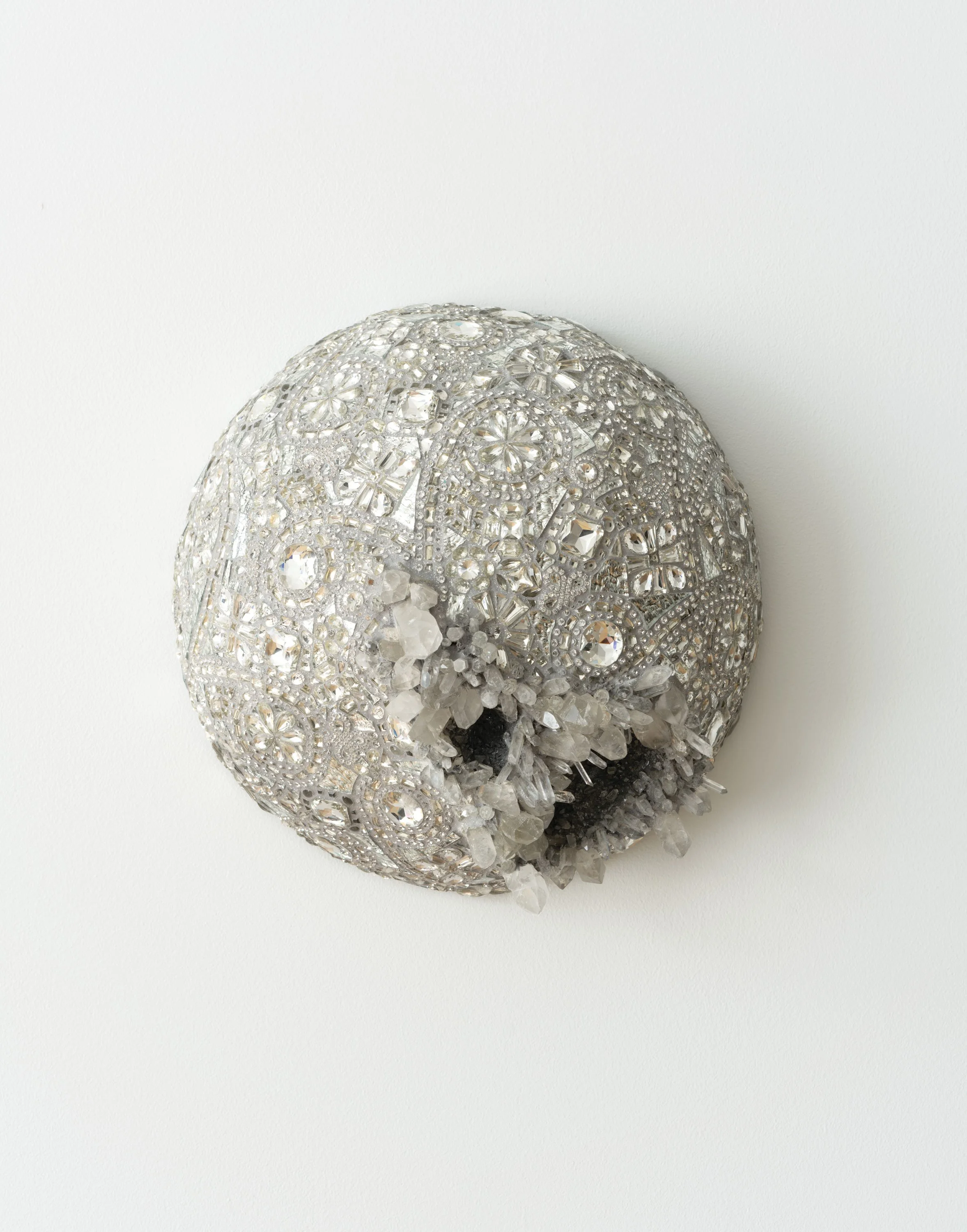Collection Highlight: "When a Third Sun" by Lauren Fensterstock
Lauren Fensterstock (United States, born 1975), When a Third Sun, 2021, glass, vintage crystal, quartz, and mixed media, 14 7/8 x 14 1/2 x 8 inches. Museum purchase with support from the Peggy and Harold Osher Acquisition Fund, 2021.20. © Lauren Fensterstock
“With so much turmoil
on the ground, I’ve turned
my eyes to the sky
for wisdom.
Moody storms.
Ominous comets.
Dying stars.
Weather events and
celestial sightings are a
historically rich location
for the projection of
human anxiety, hopes,
and fears. Mosaics
highlight the tension
between small parts
and a whole.”
In 2020, Portland-based artist Lauren Fensterstock (born 1975) embarked on the body of mosaic work Impermanent Conditions. She sought inspiration in the Buddha’s “Sermon of the Seven Suns,” in which he describes a series of suns appearing one by one, each having a different impact on the ecological landscape. By the appearance of the seventh sun, the cumulative effect of all seven suns hanging in the sky together causes the end of the world. For Fensterstock, the lesson of this story is that all material is impermanent, and that freedom only comes when we can accept the beauty of this destruction.
Impermanent Conditions consists of seven wall-mounted mosaic suns (ranging in scale from one to four feet) that not only ponder the Budda’s teachings but serve as a visual metaphor for contemporary life. The PMA is proud to announce the recent acquisition of the third sculpture in the series of seven, When a Third Sun, for its permanent collection. According to the “Sermon of the Seven Suns,”
There comes a time when, after a very long period has passed, a third sun appears. When this happens, the great rivers—the Ganges, Yamunā, Aciravatī, Sarabhū, and Mahī—wither away and dry up, and are no more. So impermanent are conditions . . .
When a Third Sun is thus a maximal presentation of a sun rendered in glass, vintage crystal, quartz, and other mixed media. “With the third, I began observing the actual sun, which is a nearly perfect orb of gas,” says Fensterstock. “Our sun often features dark sunspots and solar flares, which inspired the recesses and explosive areas of quartz. With its smooth geometric surface, the third sun features the largest area of ordered pattern, only slightly—but dramatically—disrupted by something other.” Its sparkling presence exerts a gravitational pull on the viewer, suggesting its beauty is welcoming, safe, and orderly. Yet it also has sunspots and solar flares, reminding us of the impact of rising temperatures on the planet Earth. [Jaime DeSimone]

